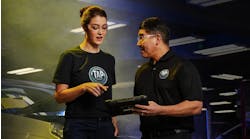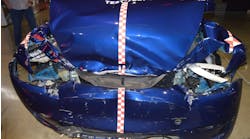In the world of automotive care, two different verticals often coexist: collision repair and general repair. While traditionally separate entities, a growing trend is emerging – the amalgamation of collision and general repair shops under one roof. This fusion presents a unique opportunity, offering customers comprehensive automotive solutions while providing business owners with diversified revenue streams and operational efficiencies.
At first glance, the collision and general repair sectors seem incompatible. Collision repair work demands precision in damage analysis, joining methods such as welding and rivet-bonding, body work, and painting, while general repair focuses on mechanical expertise. However, beneath the surface, both share foundational elements of problem-solving and great customer service. By uniting these disciplines, a comprehensive approach to automotive care emerges, empowering shops to address a wider range of customer needs.
One of the key advantages of integrating collision and general repair services lies in enhanced customer convenience. When faced with automotive issues, customers often prefer a one-stop solution over navigating multiple service providers. By offering both collision repair and general maintenance services, businesses can streamline the customer experience, eliminating the need for clients to shuttle between different locations for diverse automotive needs. This convenience factor fosters customer loyalty and strengthens the shop's reputation in the community. If a customer had a great experience with your general repair, they’ll turn to you for auto body work also.
Integrating collision and general repair services optimizes resource utilization and operational efficiency. Instead of maintaining separate facilities, equipment, and inventory for each service segment, shops can consolidate resources under one roof. This consolidation minimizes overhead costs, reduces redundancies, and maximizes the utilization of space and equipment. Additionally, shared administrative functions such as scheduling, billing, and customer management become more streamlined, freeing up valuable time and resources for core business activities.
From a business perspective, the fusion of collision and general repair services offers diversification benefits. The automotive industry is subject to seasonal fluctuations and economic downturns, impacting the demand for specific services. By diversifying their service portfolio, shops mitigate risk and insulate themselves from market volatility. For instance, while collision work may experience fluctuations based on accident rates and insurance claims and even weather, general repair services provide a steady stream of revenue, particularly from routine maintenance and repairs.
Moreover, the combination of collision and general repair shops creates cross-selling opportunities, allowing shops to upsell additional services to existing customers. For instance, a customer visiting for collision repair may discover the need for routine maintenance or mechanical repairs during the inspection process. By offering auto repair services under one roof, shops can capitalize on these cross-selling opportunities, increasing their average ticket size and overall revenue.
However, the integration of collision and general repair services presents unique challenges that require careful navigation. One of the primary challenges lies in maintaining distinct brand identities and customer perceptions. Collision repair and general maintenance evoke different associations in the minds of consumers, with collision work often associated with accidents and damage, while general maintenance conveys proactive care and preventative measures. To overcome this challenge, shops must effectively communicate their comprehensive service offerings and emphasize the benefits of integrated automotive care.
And as with any repair shop, the owner must invest in ongoing training and development for both the collision and general repair sides of the business. Cross-training programs, manufacturer certifications, and continuous education initiatives are essential to keep pace with evolving automotive technologies and industry best practices.
Collision and general repair shops under one roof can be a profitable and successful businesses if the owner keeps in mind not just the similarities but also the differences. But one thing is the same – great customer service is paramount for a successful repair shop.





